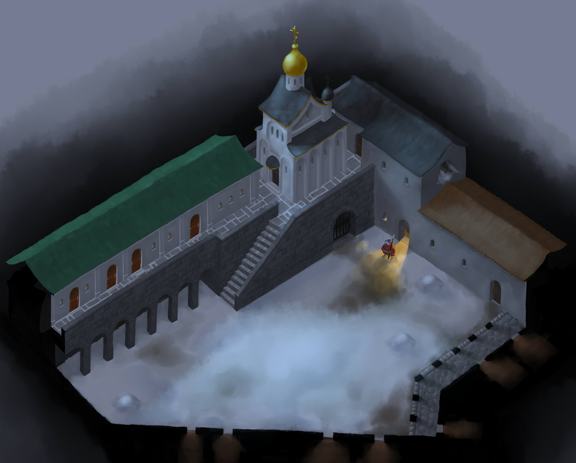Hello everyone!
I’m very glad to announce that Tsar Project is now officially in production!
The next Tsar Update Bruno will lay more details in every department’s work, but for now I’ll give you a shot from the studio and some information on my work:
In the background our beautiful 64sq ft pinning board, full of references and WIPs, including beta versions of the game’s map, sound design equalization and chord maps, plot drafts and else. It is a greatly useful feature for a creative studio, indeed.
Those in the foreground are little models I’ve done recently of two types of guards we’ll have in the Kremlin, they’re made of platicine, and still WIP, but are already useful in finding the right angle for their sprites.
Behind them you can (NOT) see three models of our protagonist, in whom my work is focused now, primarily in doing his basic movements animations and sprites.
Last but not least there is the Tsar Project logo!!! We have decided to use the same principle of the studio’s visual ID in our in development projects, so the typography is the same Cedilha Script and the logo in a brush stroke monogram of Tsar (actually, Царь).
Type to you later, and have a nice week!
 English
English Português
Português
